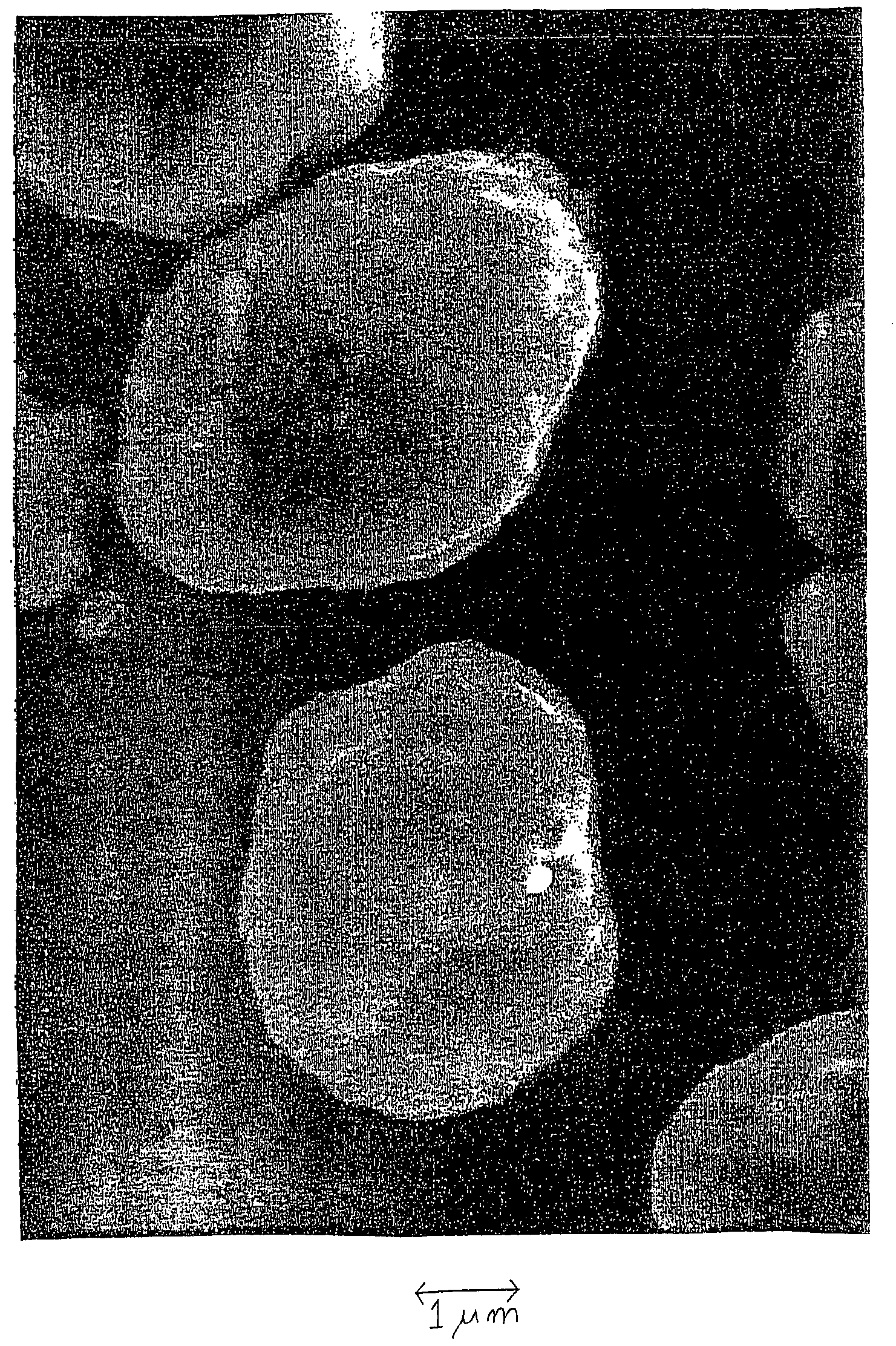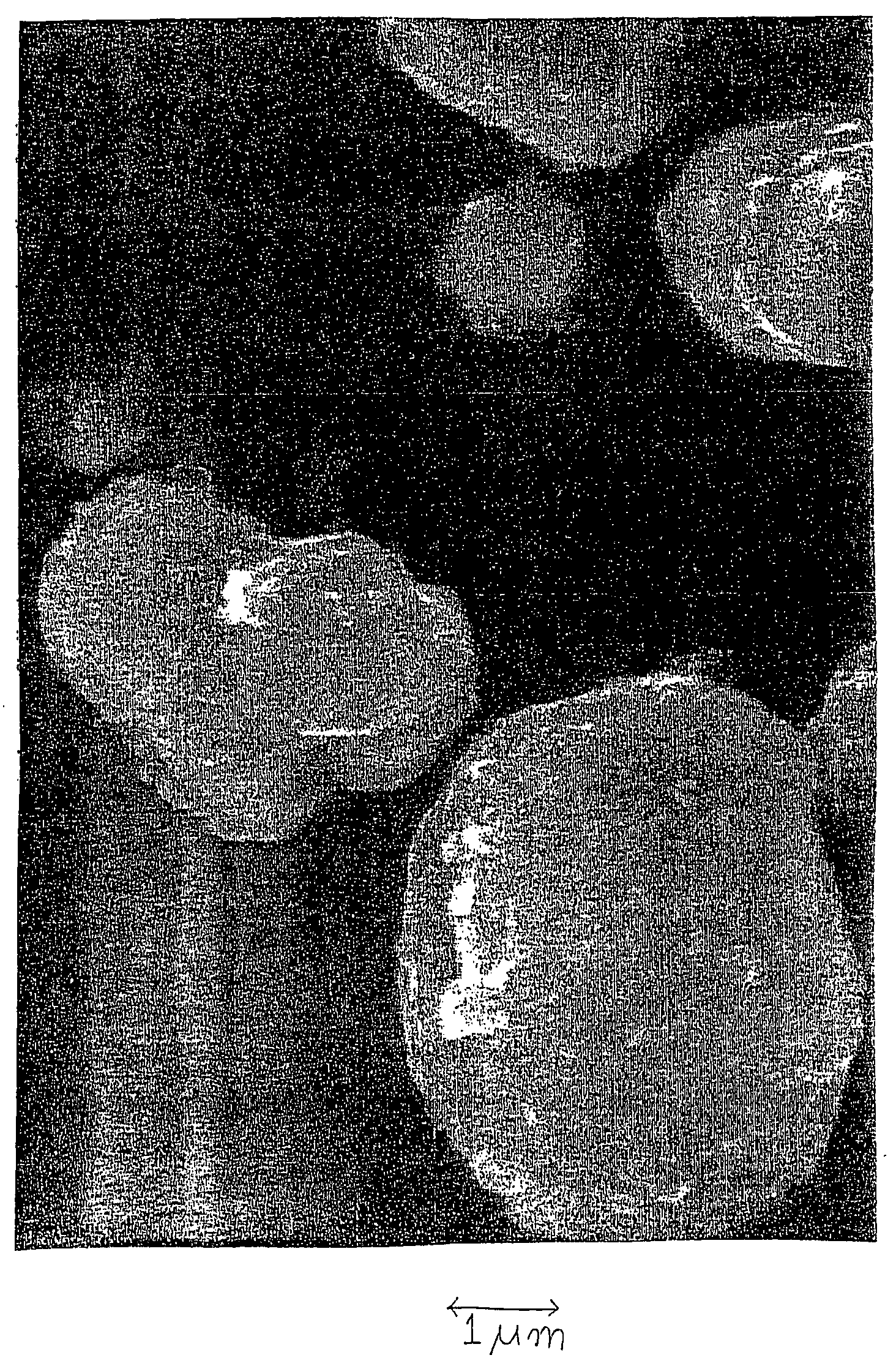Carbon-covered lithium transition metal oxide, secondary cell positive electrode material and secondary cell
a lithium transition metal oxide and positive electrode technology, applied in the direction of positive electrodes, cell components, electrochemical generators, etc., can solve the problems of affecting the yield ratio of the obtained positive electrode, the dispersed state of the material in the obtained positive electrode is not uniform, and the cell quality fluctuation
- Summary
- Abstract
- Description
- Claims
- Application Information
AI Technical Summary
Benefits of technology
Problems solved by technology
Method used
Image
Examples
example 1
[0054] The present invention is further illustrated by the following examples of the invention. As an active material, “Cellseed C-5” (manufactured by Nihon Kayaku Kougyou K.K.) was used. As a carbon black, Ketchen black (manufactured by Lion K.K.) was used.
[0055] The above active material and the above carbon black in the weight ratio of 96 to 4, were treated in “Hybridizer” (manufactured by Nara Kikai Seisakusho K.K.), by giving impulse in a fast gas stream. The treatment condition was as follows: peripheral speed was 100 m / sec, treatment time was 5 minutes. The obtained matter was observed by an electron microscope, and the covered ratio was determined by EPMA analysis, then it was confirmed that a product which the carbon black covered completely its surface was obtained. FIG. 1 shows its electron micrograph by secondary electron image (magnification rate: 10000 times).FIG. 5 shows an electron micrograph by secondary electron image of “Cellseed C-5” before the covering treatmen...
examples 2 to 7
[0056] Other examples are further illustrated below. As an active material, one from “Cellseed” C-2K, C-5, and C-10 (manufactured by Nippon Kagaku Kougyou K.K.) was used. As a carbon black, “Ketchen black ECP”(manufactured by Lion K.K.) or “Acetylene black HS-100” (manufactured by Denki Kagaku Kougyou K.K.) was used. The treatment condition is shown in the following table.
treatment time byactive materialcarbon blackweight ratioHybridizerExample 2Cellseed C-5Ketchen black ECP92 to 85 minExample 3Cellseed C-5Acetylene black HS-10096 to 45 minExample 4Cellseed C-5Acetylene black HS-10092 to 85 minExample 5Cellseed C-2KKetchen black ECP95 to 53 minExample 6Cellseed C-5Ketchen black ECP95 to 53 minExample 7Cellseed C-10Ketchen black ECP95 to 53 min
[0057] The electron micrographs of the cobalt oxide lithium covered by carbon black obtained in the Examples 2 to 4 are shown in FIGS. 2 to 4. The covering ratios were determined by EPMA analysis, and it was confirmed that any of the obtained...
example 8
[0058] As the active material, Cellseed C-5 (manufactured by Nippon Kagaku Kougyou K.K.) was used. As the carbon fiber, VGCF (graphitized, with fiber length of from 10 to 20 μm, aspect ratio of from 10 to 500, manufactured by Showa Denko K.K.) was used.
[0059] The above active material and the above carbon fiber in the weight ratio of 98 to 2 were treated by means of Hybridizer (manufactured by Nara Kikai Seisakusho K.K.) by giving impulse in a fast gas stream. The treatment condition was as follows: peripheral speed was 100 m / sec, treatment time was 3 minutes. The obtained matter was observed by an electron microscope, and it was confirmed that a product which carbon fiber is attached to its surface was obtained. FIG. 6 shows an electron micrograph (magnification rate: 6000 times). It was observed that the carbon fiber bonded plural particles of active material. As the carbon fiber is attached firmly to the active material, and furthermore the network between the active material is...
PUM
 Login to View More
Login to View More Abstract
Description
Claims
Application Information
 Login to View More
Login to View More - R&D
- Intellectual Property
- Life Sciences
- Materials
- Tech Scout
- Unparalleled Data Quality
- Higher Quality Content
- 60% Fewer Hallucinations
Browse by: Latest US Patents, China's latest patents, Technical Efficacy Thesaurus, Application Domain, Technology Topic, Popular Technical Reports.
© 2025 PatSnap. All rights reserved.Legal|Privacy policy|Modern Slavery Act Transparency Statement|Sitemap|About US| Contact US: help@patsnap.com



